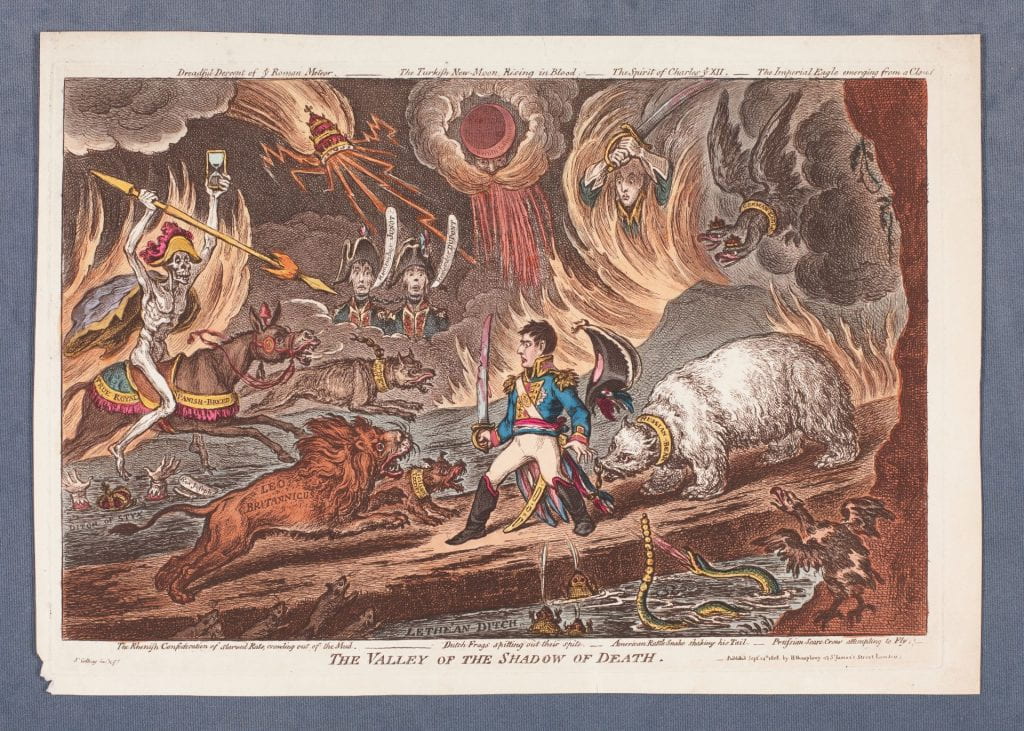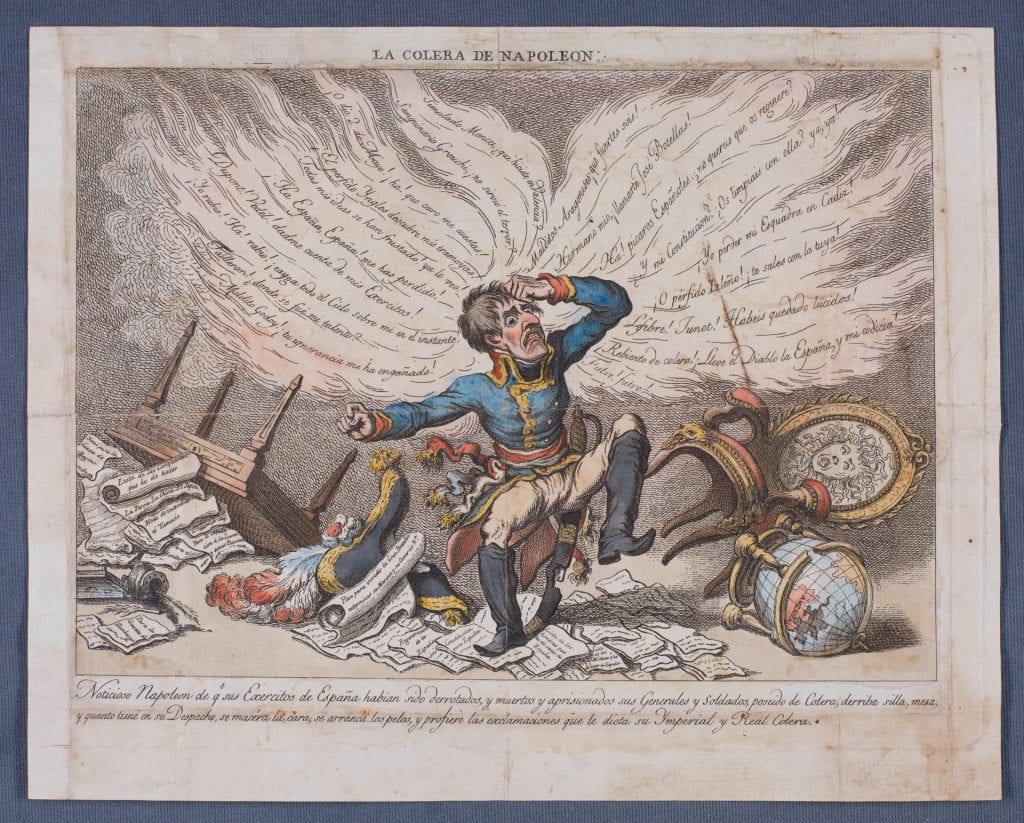
“Napoleon, advancing down a gently sloping causeway of rock which traverses water and flames, is halted by ‘Leo Britannicus’ who bounds savagely towards him. He drops a short chain attached to the nose of the ‘Russian Bear’, a huge white creature at his heels. He is beset on all sides by monsters, who emerge from a background of flame, smoke, and cloud, or from the water. Beside the British Lion is a little ‘Sicilian Terrier’, barking ferociously. Death, a skeleton-like corpse, rides a mule which dashes through the air towards Napoleon, snorting flame. He wears a Spanish hat and cloak, and holds up a flaming spear and an hour-glass whose sands have almost run out. The mule’s trappings are inscribed ‘True-Royal-Spanish-Breed’. Outstripping the mule, a savage ‘Portuguese Wolf’, with the end of a broken chain attached to his collar, leaps towards Napoleon. The heads and hulders of two melancholy French officers with their necks chained together emerge from clouds to address Napoleon; they say: “Remember Junot and Remember Dupont.” Above these is the Pope’s tiara, the apex of flames, emitting thunderbolts towards Napoleon, and inscribed ‘Dreadful Descent of ye Roman Meteor’ [cf. BMSat 10970]. Immediately above Napoleon is a crescent moon inscribed ‘British-influence’ enclosing the old (dark) moon, which is ‘French Influence’. This forms the centre of a turban, and is surrounded with fiery clouds flanking the features of the Sultan, looking fiercely down at Napoleon. Blood drips from it. This is ‘The Turkish New-Moon, Rising in Blood’. Beside it (right) the head and arms of a man raising an enormous sword above Napoleon emerge from swirling flames: The ‘Spirit of Charles ye XII’ [of Sweden 1682-1718]. On the r. a double-headed Habsburg eagle swoops towards Napoleon from clouds: “- The Imperial Eagle emerging from a Cloud.” Its collar is inscribed ‘German Eagle’. From the water beyond Napoleon’s causeway, the ‘Ditch of Styx’, project the crown and hands of the drowning ‘Rex Joseph’; he is immediately under the Spanish mule ridden by Death. The water on the nearer side of the causeway, in the foreground, is the ‘Lethean Ditch’. From this (left) rats crawl towards Napoleon: “The Rhenish Confederation of Starved Rats, crawling out of the Mud [cf. British Museum Satires No. 10433].” Three frogs raise their heads from the ditch to spit: “Dutch-Frogs spitting out their spite.” A rattle-snake spits venom, and shakes its tail: “- American Rattle-Snake shaking his Tail.-” On the right, standing on a rock, is a dilapidated eagle with clipped wings, and scanty feathers: “Prussian Scare-Crow attempting to Fly -.””–British Museum online catalogue.
- Printmaker: Gillray, James, 1756-1815, printmaker.
- Title: The valley of the shadow of death [graphic] / Js. Gillray invt. & ft.
- Publication: [London] : Publish’d Septr. 24th, 1808, by H. Humphrey, 27 St. James’s Street, London, [24 September 1808]
Catalog Record
808.09.24.01+
Acquired January 2020



